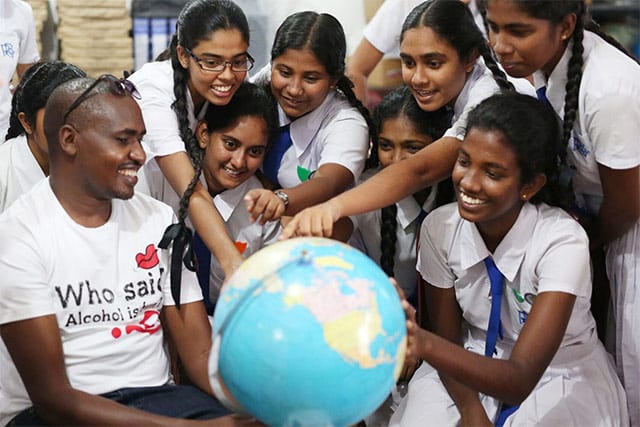Alcohol: global health’s blind spot
Comment
Excerpts
Non-communicable diseases constitute more than 72% of annual global deaths and are now rightfully receiving increased attention in the global health agenda. However, one of the primary risk factors for non-communicable diseases continues to be neglected: alcohol.
Although the alcohol industry uses sophisticated public relations campaigns to maintain this near invisibility within the health agenda, the global health community is also culpable. Global health policy makers do not appreciate the evidence on alcohol, identify and confront interference from the alcohol industry, or prioritise resources, policies, and programmes for alcohol control.
According to the International Agency for Research on Cancer, alcohol, like asbestos and tobacco, is a Group 1 carcinogen and can cause multiple forms of cancer; health risks are associated with alcohol use at any degree of consumption. WHO’s 2018 Global Status Report on Alcohol and Health estimates that, annually, alcohol is responsible for more than 25% of global deaths in people aged 20–39 years and kills more than 3 million people.
Global alcohol consumption is also rapidly expanding and expected to increase by more than 10% by 2030. This rise is anticipated to be driven by market expansion in key regions, including WHO’s South-East Asia region (46.8% market growth by 2030) and Western Pacific region (33.7% market growth by 2030).
Accordingly, global policy makers included alcohol control in the Sustainable Development Goals, but often remain unaware of industry interference.
Learning from the tobacco industry, the alcohol industry has promoted doubt and confusion about the health effects of alcohol by funding research and engaging in broad public relations campaigns, including the use of social media, to mislead the public regarding links between alcohol and cancer. Yet, the alcohol industry has largely avoided the stigma associated with the tobacco industry. On the contrary, the alcohol industry enjoys relative discretion in its efforts to distort policy making. Although Philip Morris International’s Foundation for a Smoke-Free World has been widely condemned by the global health community, the Foundation set up by the world’s largest beer brewer, Anheuser-Busch InBev, which, according to the organisation’s website, was “created to reduce harmful drinking globally”, receives little to no scrutiny. In fact, the foundation attracts senior UN and former US government officials to its board and funds and engages in policy making processes. Despite obvious conflicts of interest, the Anheuser-Busch InBev Foundation sponsors a US National Academies of Science forum on global violence prevention.
Another example is UNLEASH, created by the Carlsberg Foundation, which is a “global innovation laboratory” for youth innovators to build networks for the Sustainable Development Goals, partnering with UNDP, UN Environment Programme, UN University, UN Habitat, and many others.
Such engagement reflects a deliberate industry-wide strategy to shape policy making. The alcohol industry misrepresents evidence of the adverse health effects of alcohol and seeks to develop partnerships to portray the industry as a responsible partner by constructing arguments that focus on alcohol consumers instead of the supply of alcohol.
In 2019, WHO issued staff guidance prohibiting partnering, receiving support, or collaborating with the alcohol industry. Beyond these guidelines for staff, WHO’s new SAFER initiative for national policy makers has a principle of protecting countries from industry influence; however, how this principle will be operationalised is not yet clear. More broadly, the SAFER initiative has not received the required programmatic priority or resources. For example, taxing alcohol is one of the SAFER strategies. WHO has recommended tax rates for both tobacco (at least 70% of the final price) and sugar-sweetened beverages (at least 20%), but not for alcohol.
Global health charities also persistently ignore alcohol control. Bloomberg Philanthropies, a worldwide leader in tobacco control, convened a high-level task force with former heads of state and finance ministers to consider fiscal policies for health. The philanthropic organisation recognised that alcohol taxes were underused, and, if implemented, could indirectly save up to 22 million lives over the next 50 years. Yet, Bloomberg Philanthropies has not devoted resources to alcohol control programmes. The Wellcome Trust, which announced a major commitment of £200 million to transform research and treatment for mental health, has also invested £171 million in Anheuser-Busch InBev as of 2017.
No global health charity has allocated substantial resources or prioritised investment in alcohol control, despite the fact that this neglected issue needs leadership. The global health community continues to disregard alcohol control as a policy priority that can save lives. Policy attention to alcohol is not nearly commensurate with its threat to health; this oversight kills more people annually than HIV, tuberculosis, and malaria (the current focus of the Global Fund) combined.
Alcohol control is in dire and urgent need of the strong champions within the UN system afforded to tobacco control. Academics and health professionals have called for a framework convention on alcohol control; however, before this guidance can be made, the global health community needs to recognise its blind spot.
